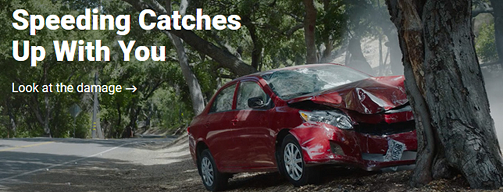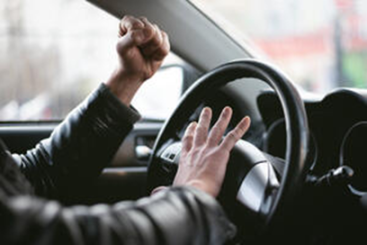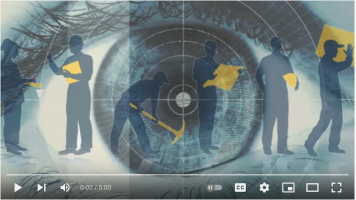PEC students represent Lawrence in increasing engagement with alumni, stewarding gifts to the university, raising funds for the university/Lawrence Fund, and help facilitate student philanthropy events on campus. PEC students reach out to alumni to update contact information, share Lawrence news, build relationships, and solicit gifts. PEC students act as advocates to assist in creating a culture of philanthropy and gratitude in the Lawrence community. This is an excellent resume building position on campus that offers networking opportunities, flexible hours, and monetary bonuses. Apply on Handshake!
Category: Students
Important Campus Construction Updates
The Drew St. Bridge is on course to be open for pedestrian traffic by Labor Day! Road work will still be underway as they clear in preparation for the rip rap.

The Gateway Welcome Arch is near completion. What a stunning addition to our beautiful campus! Watch for the announcement for the unveiling!
The Riverside Trail has beautiful new landscaping. Enjoy a walk when you have time to check it out!
Warch Campus Center’s new flooring is installed on the second floor and the new automated mail boxes will be coming soon.
As always – safety first! Do not enter construction areas! While many projects are wrapping up, there is still construction taking place around campus. Please be mindful of your surroundings at all times. Should you have questions or see anything concerning as you’re out and about, please contact Katherine in Facility Services at: Katherine.lehman@lawrence.edu or at ext. 6893
Offices on the move
As detailed in President Laurie Carter’s message to campus earlier this week, a number of offices on campus are on the move, all part of continued efforts to ensure that all campus services and experiences are easily accessible for our students.
Several student-focused offices are moving closer to the center of campus. Brokaw Central, which includes the Registrar, Financial Aid, Student Accounts, and Cashier, is moving into Chapman Hall; the Center for Community Engagement and Social Change is moving to the Warch Campus Center; and Residential Education will move to Raymond House. As a result of these moves, a number of additional offices are relocating, including Development and Alumni & Constituent Relations, which will reside in Brokaw Hall. The Office of the President and the Office of Diversity, Equity, & Inclusion will relocate to Wilson House, and Sampson House will be fully dedicated to academic affairs and faculty, housing the Office of the Provost and providing space for other faculty needs.
Imagine Fox Cities – Strive to Thrive Week
Join Imagine Fox Cities in paving the way for a thriving community. Strive to Thrive Week is happening Aug. 22-26. From hands-on workshops to local events and guided site visits of places that connect us, engage in your community and lay the groundwork for: early childhood development, placemaking, economic development, and belonging. Visit the Imagine Fox Cities website for more information: https://imaginefoxcities.com/thrive/.
Recognizing and Avoiding Aggressive Drivers 
Aggressive driving is any unsafe behavior performed purposely with ill intent or disregard for safety that puts other drivers or property at risk. It is a moving violation subject to fines or jail time. Examples of aggressive driving include:
- speeding in heavy traffic and/or driving too fast for road conditions;
- tailgating and/or cutting in front of another driver, then slowing down;
- running red lights, speeding up through yellow lights or running stop signs (most dangerous);
- weaving in and out of traffic and changing lanes without signaling;
- blocking cars attempting to pass or change lanes; or
- passing a vehicle on the wrong side of the road.
Some people drive aggressively because they have too much to do and are “running late” for work, school, their next meeting, lesson, soccer game, or other appointment.
Speeding is a type of aggressive driving that often includes many other unsafe behaviors including: tailgating, frequent unsafe lane changes, running red lights or stop signs, and often become angry at anyone who they believe impedes their progress.
Speed also affects your safety even when you are driving at the speed limit but too fast for road conditions, such as during bad weather, during traffic congestion when a road is under repair, or in an area at night that isn’t well lit.
Speeding endangers not only the life of the speeder, but all of the people on the road around them, including law enforcement officers. In 2020, speeding was a contributing factor in 29% of all traffic fatalities.

Extreme cases of aggressive driving escalate to road rage, which can end in violence. Road rage behaviors (other than shouting or inappropriate gesturing) is a criminal offense. Examples of road rage include any of the following behaviors:
- cursing or making rude or obscene gestures at other drivers;
- throwing objects at another vehicle;
- ramming or sideswiping a vehicle;
- forcing a driver off the road; or
- physically assaulting a driver.
Once you’ve identified an aggressive driver, the safest thing that you can do is to avoid them.
Use your mirrors and peripheral vision to actively monitor the area around your vehicle. When you see a vehicle being driven aggressively make a mental note of the vehicle and its position. Stay alert to the likelihood that driver may create hazards that you’ll need to deal with.
When you see an aggressive driver, make your avoidance plan. Most often, the best solution is to let them go ahead. Find a safe place, adjust your lane position a little so they can see the way past you is clear. You may want to gently reduce your speed to encourage them to pass.
Avoid Confrontation
Remaining calm and courteous behind the wheel of a vehicle lowers a driver’s risk of an unpleasant confrontation or negative driving encounter.

Avoid eye contact. Eye contact with aggressive drivers increases the chance of confrontation. Steer clear and ignore angry drivers, when possible. Keep the encounter as impersonal as possible.
Do not respond to aggression with aggression.
Traffic problems and drivers’ behaviors are not a personal challenge or an affront. Avoid becoming reactive. Get out of the other drivers’ way as soon as safely possible.
Be tolerant and forgiving. Another driver may be having a really bad day. Always assume their behavior is not personal.
While drivers have no control over others on the road, they can control their behaviors and reactions to circumstances around them. Staying alert, remaining calm, and obeying the rules of the road can help decrease aggressive driving and avoid the dangers of road rage.
Avoid Actions that Provoke Others
Avoid tailgating.
Give other drivers room on the road. Leave at least a two-second cushion between vehicles to provide enough room to stop in an emergency and to give other drivers room to change lanes, if needed. Having a safety zone of at least two seconds between your car and the next vehicle is recommended during normal driving conditions. Bad weather, traffic conditions, and personal preferences could all require the safety zone to be larger.
Never drive in the passing lane.
The left lane of multi-lane roadways is the passing lane for use when passing another vehicle. After passing a vehicle, move back into a driving lane when both headlights of the passed vehicle are visible in the rear view mirror.
Let drivers pass.
Avoid obstructing the flow of traffic even when going the speed limit. Always allow faster traffic to pass. Never challenge an aggressive driver by speeding up, slowing down, or attempting to hold the same position. Avoid causing another driver to change their speed or direction. Never force a driver to use their brakes or turn their steering wheel.
Use turn signals appropriately.
Use turn signals when merging, changing lanes, or turning. Check blind spots before merging or switching lanes to ensure other drivers are not cut off. Do not speed. Speeding increases the chances of a driver losing control of a vehicle. It is a contributing factor in more than one-quarter of all traffic fatalities.
Use the horn and headlight high beams responsibly.
Tap the horn only when needed but avoid the long blasts and accompanying hand gestures. On an expressway, two brief flashes of high beams are acceptable to request a slow driver in a passing lane to move. Do not use repeated high beam flashes or use steady high beams to make a slow vehicle move or go faster. When driving at night, dim headlights when approaching head-on traffic.
Let drivers merge.
Whether merging or yielding the right of way, drive courteously to avoid a confrontation. When in doubt let, the other vehicle go first.
Consider others in parking lots.
Park in one spot, not across multiple spaces. Take care not to hit cars with the
vehicle’s door or with nearby shopping carts.
How to Avoid Becoming an Aggressive Driver
Make a plan and give yourself enough time to get where you are going. Not knowing where you’re going or not having enough time to get there are among the most common reasons for aggressive driving behaviors. Avoid those traps: think about the route you’re going to take and make a trip plan with a realistic schedule. Make adjustments when trips don’t proceed exactly as planned. Don’t take your problems and frustrations with you into the car. Getting behind the wheel when you’re upset, frustrated or angry can be an invitation to poor driving behaviors. Remember speed limits are put in place to protect all road users.
Sources:
https://www.nhtsa.gov/risky-driving/speeding
https://www.tdi.texas.gov/pubs/videoresource/fsaggressive.pdf
https://www.thesilverlining.com/westbendcares/blog/eight-signs-youre-an-aggressive-driver
Important Campus Construction Updates
Many projects are wrapping up! Let’s talk about residence halls!
Kohler Hall: window install and basement remodel will be wrapped up by Friday.
Brokaw Hall: floors 3 & 4 have new windows and blinds, and new ceiling tiles in the hallways.
Sage Hall: lighting has been installed in the resident rooms, along with new blinds.
Res Life:
- New furniture has been installed in:
- 741 E. Boldt Way
- 742 E. Boldt Way
- 203 N. Union
- Brokaw 3rd floor lounge
- Trever public space
- Quad 4 public space.
- New flooring has been installed in:
- Colman Hall floors 2, 3 & 4 hallways
- 741 E. Boldt Way public space
- 203 N. Union public space
- Sage lobby
- Trever hallways
- Quad 2 and 741 E. Boldt Way first floor bathrooms have been updated
- New ceiling tiles have been installed in several of the buildings
As always – safety first! Do not enter construction areas! While many projects are wrapping up, there is still construction taking place around campus. Please be mindful of your surroundings at all times. Should you have questions or see anything concerning as you’re out and about, please contact Katherine in Facility Services at: Katherine.lehman@lawrence.edu or at ext. 6893
Important Campus Construction Updates
Gateway Welcome Arch: You can’t miss the amazing work happening on the corner of College Ave. and Drew St! Watch this project daily as the progress happens that fast!
Drew St. Pedestrian Bridge: The framing is being installed in preparation for pouring the concrete. Everything is on track for this project!

Brokaw Hall: The new window install on floors 3 & 4 is near completion. The basement renovation design is underway and will be an ongoing project for a few months yet.
Resident Halls: Some of the resident halls will be receiving new furniture for their public spaces this week.
As always – safety first! Do not enter construction areas! Please be mindful of your surroundings at all times as construction is in full swing. Should you have questions or see anything concerning as you’re out and about, please contact Katherine in Facility Services at: Katherine.lehman@lawrence.edu or at ext. 6893
What you should do before lifting
Planning ahead before lifting items can reduce the possibility of experiencing a material handling injury. Here is a list of tips to follow to ensure that you are lifting in a safe manner.
- Always check before lifting to see if mechanical aids such as lift trucks, dollies or carts are available (if the lifting task involves moving items from one floor level to another use an elevator if available instead of the stairs).
- Get help with heavy or awkward loads.
- Assess and identify the weight of the load.
- Be sure that you can lift the load without over-exertion.
- Be sure that the load is “free” to move.
- Check that the contents of the load are stable and balanced. Repack items so the contents will not shift, where possible.
- Check that the planned location of the load is free of obstacles and debris.
- Be sure that the path to the planned location of the load is clear. Grease, oil, water, litter and debris can cause slips and falls.
- Particular handling and lifting techniques are needed for different kinds of loads or materials being handled (for example, compact loads, small bags, large sacks, drums and barrels, cylinders, sheet materials like metal or glass). Check here or on materials for details
- Do not lift if you are not sure that you can handle the load safely.
If you are ready – prepare for the lift by warming up the muscles.
You can follow along with Nerd Fitness Senior Coach Staci Ardison for about 4 minutes, this warm-up video of exercises will elevate your heart rate (get your blood flowing), put your muscles and joints through their range of motion to warm them up and make sure everything is functioning properly, and prepare your body to lift.
(Note: you can skip the jump rope and mountain climbers’ exercises)

https://www.youtube.com/watch?v=qQ96oXp5RTU&t=2s [4:31]
Now that your warmed up, follow these general tips for lifting
- Stand close to the load and face the way you intend to move.
- Use a wide stance to gain balance.
- Be sure you have a good grip on the load.
- Keep arms straight.
- Tighten abdominal muscles.
- Tuck chin into the chest.
- Initiate the lift with body weight.
- Lift the load as close to and as centered to the body as possible.
- Lift smoothly without jerking.
- Avoid twisting and side bending while lifting.
- Avoid carrying loads with only one hand.
Eye on Safety – Lifting Items at Work – Video (skip adds after 5 seconds)
Lifting objects is a common activity in many workplaces. If not done properly, there are many ways you can be injured while lifting objects at work. In this video, we are going to show you some good lifting techniques and share some tips to help you minimize the risk of injury.

Sources: https://www.ccohs.ca/oshanswers/ergonomics/mmh/ , https://www.nerdfitness.com/blog/warm-up/; https://www.youtube.com/watch?v=qP5nyfTDbfE
Off-Campus Programs is Hiring!
Off-Campus Programs is looking to fill three student worker positions for the 2022-2023 Academic Year, including: London Centre Student Assistant, Senegal Student Assistant, and Outreach Specialist & Special Projects Assistant. If you are interested in applying for one of these positions, please see our postings on Handshake.
If you have any questions, please contact OffCampusPrograms@lawrence.edu.
Important Campus Construction Updates
Gateway Welcome Arch: it’s well underway! The stonework has begun for the sign structure.

Drew Street Pedestrian Bridge: the structural girders have been set – at an impressive 137,000 pounds each!
Warch Campus Center: the existing flooring is removed and leveling for the new flooring is underway.
Kohler Hall: the work is on track with the new windows and basement renovation
Main Hall: Asbestos removal is happening this week and the bathroom remodels are on track.
As always – safety first! Do not enter construction areas! Please be mindful of your surroundings at all times as construction is in full swing. Should you have questions or see anything concerning as you’re out and about, please contact Katherine in Facility Services at: Katherine.lehman@lawrence.edu or at ext. 6893
